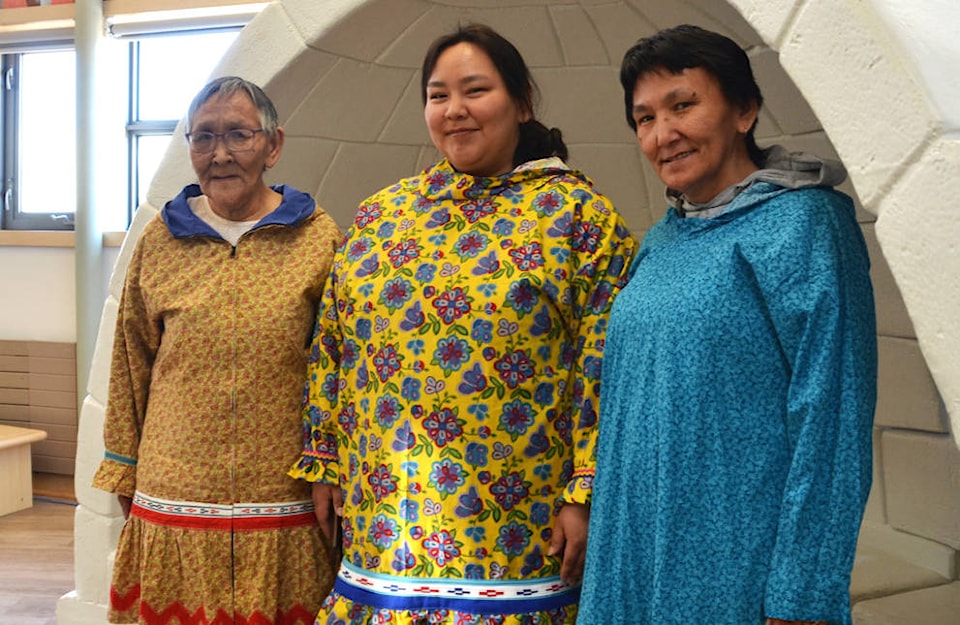Although parka season is on hiatus, several Kitikmeot women have added touches of beauty to their winter coats that will make them stand out next winter.
The Pitquhirnikkut Ilihautiniq/Kitikmeot Heritage Society recently held workshops for participants to fashion colourful covers and braiding for their parkas.
“There’s all kinds of styles,” said Eileen Okhina, cultural co-ordinator for the heritage society, whose own parka bears a rich blue cover that has special meaning because the fabric was a gift from a late Elder. “We let the participants choose what they want to use – they pick their colour and their design and what they want on it.”
Okhina also has a personal connection to the Mother Hubbard style of parka because she said her great, great grandmother brought the design to Alaska. Whereas the Delta braid, which wraps around the base of the parka, was an element that originated in the Inuvik/Tuktoyaktuk area of the NWT, she added.
She described her mother as “an amazing seamstress” who taught her and her sisters how to sew. The sewing for the parkas is done by hand and by machine. The amount of time it takes varies. Okhina said one woman spent two hours each day working on her project for a week to complete it.
The workshop participants, who also received guidance from Elder Anne Wingnek, added wolverine trim and fur “sunbursts” around the hoods of their garments as well.
With a wealth of commercially-made parkas and winter coats easily accessible at local stores and from the south, it’s important to hang on to tradition, according to Okhina.
“The design is dying down here so we’re trying to keep the Mother Hubbard style. It’s slowly disappearing so we’re trying to preserve it, keep it going,” she said. “There’s a lot of (the) young generation here who want to know how to make it.”
There could be more workshops of this kind held in the fall when the cooler weather turns people’s thoughts to protective outerwear.
“Right now it’s camping, fishing and being out on the land. It’s warm so everybody’s going out,” Okhina said.
